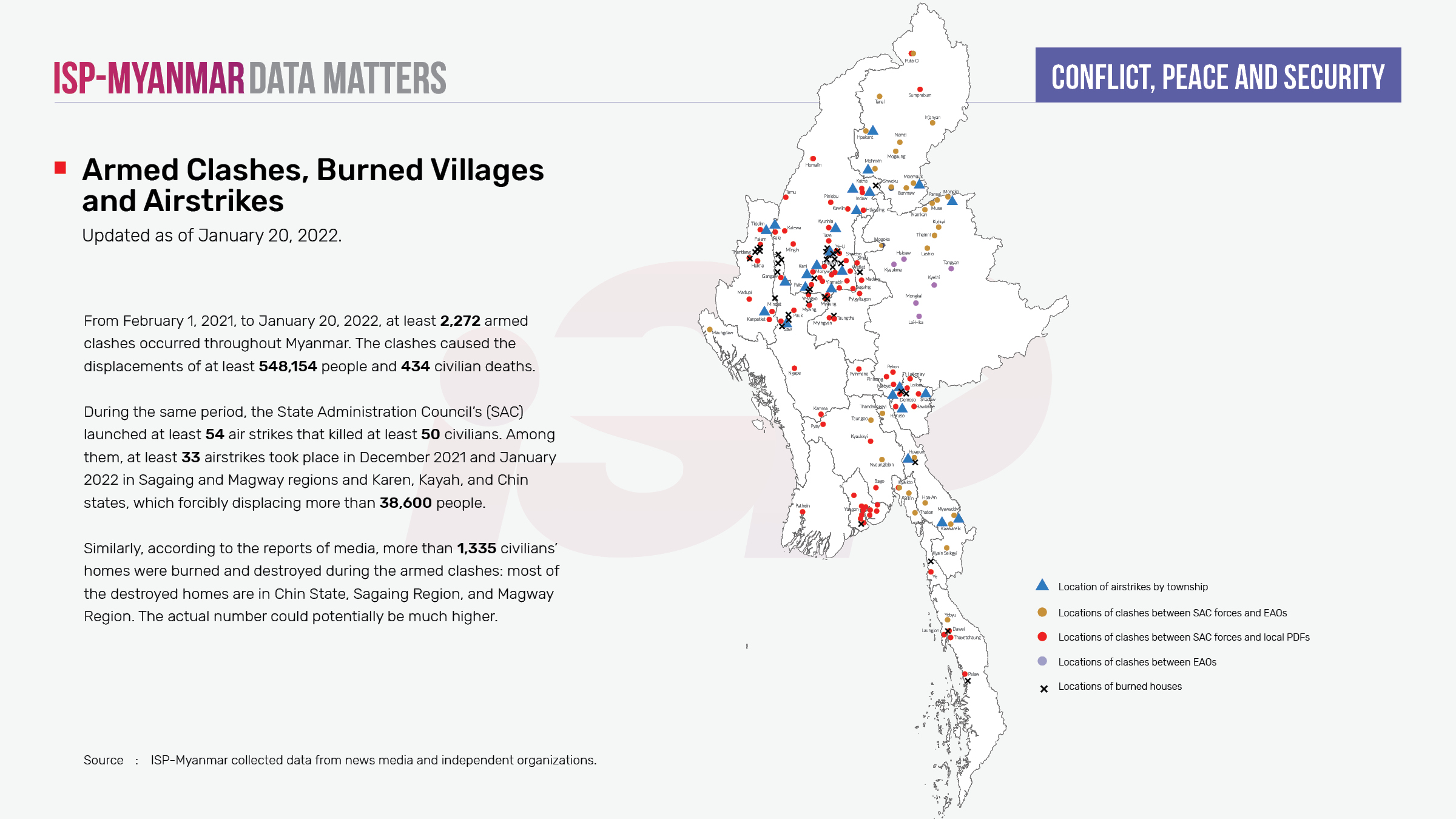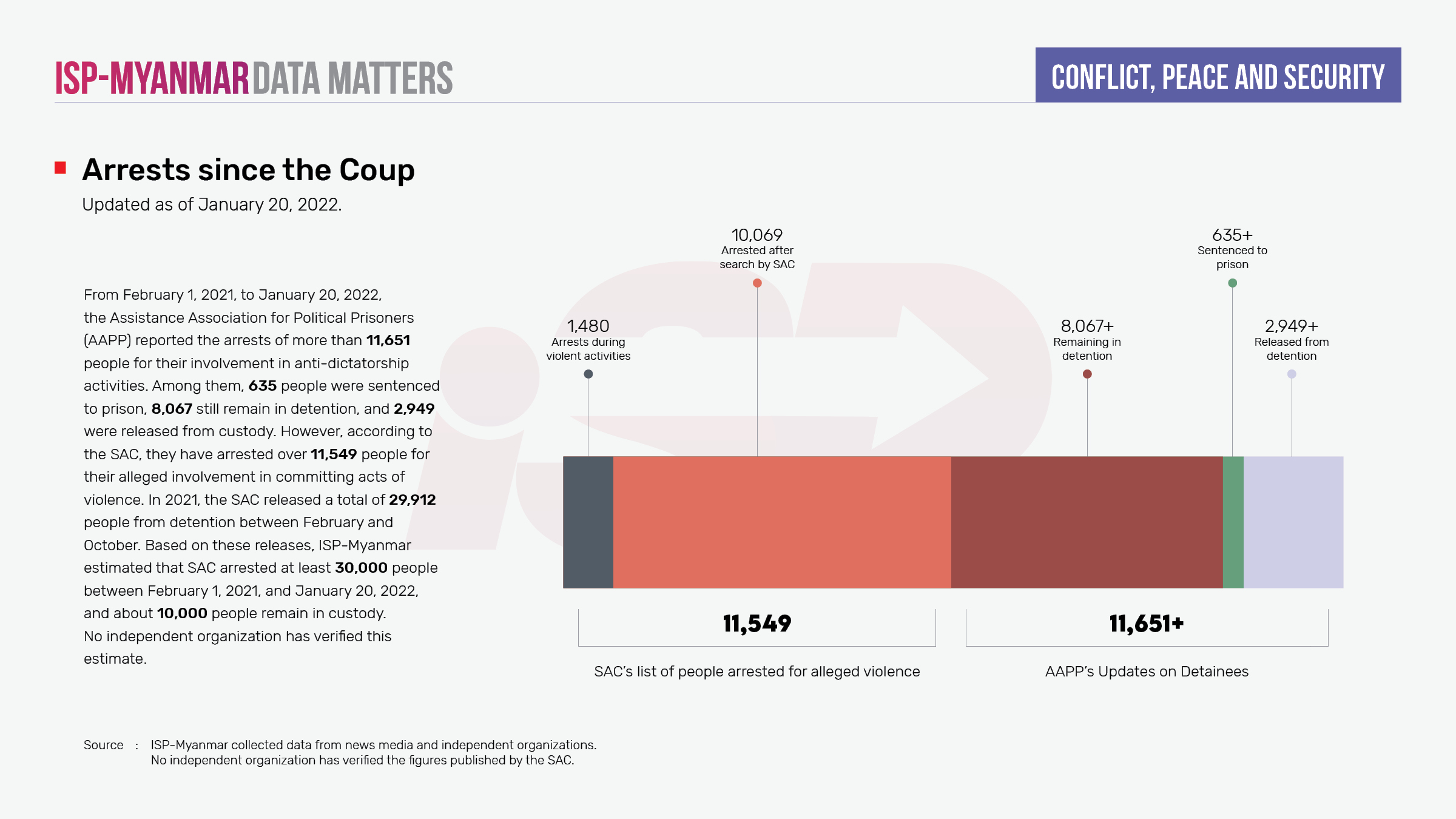Data Matters No. 3
(This article is a translation of the Burmese language version that ISP-Myanmar posted on its Facebook page on February 2, 2022).



A year on from the Myanmar military coup, civilian security challenges continue to rise. While anti-dictatorship movements continue in various forms, many instances of post-arrest violence and clashes with the military have led to humanitarian crises necessitating emergency assistance, increasing numbers of IDPs and record high numbers of civilian deaths.
∎ Deaths from Armed Clashes
From February 1, 2021, to January 20, 2022, at least 2,272 armed clashes occurred throughout Myanmar. The clashes caused the displacement of at least 548,154 people and 434 civilian deaths. During the same period, the State Administration Council (SAC) launched at least 54 air strikes that killed at least 50 civilians. Additionally, more than 1,335 civilians’ homes were burned and destroyed during armed clashes. Most of the destroyed homes were located in Chin State, Sagaing and Magway Regions.
∎ Detentions
From February 1, 2021, to January 20, 2022, the Assistance Association for Political Prisoners (AAPP) reported the arrests of more than 11,600 people. Almost 3,000 have been released from custody, leaving at least 8,600 people still in detention. Even official SAC statistics reported over 10,000 detentions.
∎ Deaths
Civilian deaths reached a 30-year record high. According to data compiled by the AAPP, at least 1,358 people died from shootings and injuries suffered during arrest by the SAC forces. However, SAC data shows at least 1,538 civilian deaths, including suspected SAC informants and victims of bomb explosions, and 292 government employees. At least a further 430 civilians have been killed during armed clashes. When combining these two lists, at least 3,500 civilians have been killed within a year as a result of military and political conflicts since the coup. The data published by the SAC is not confirmed by any independent organizations.
∎ Victims of Headshots and Deaths at Interrogation Centers
According to the AAPP data, State Administration Council (SAC) forces’ headshots killed over 158. Sagaing Region had the highest number with at least 44, with at least 30 in Mandalay Region and at least 24 in Yangon Region. At least a further 99 people have also died at SAC interrogation centers. Mandalay Region had the highest number recorded with at least 28 deaths at interrogation centers, with a further 21 deaths in detention in Sagaing Region, and at least 17 in Yangon Region.
∎ Why does it matter?
By looking at conflicts and clashes, the number of civilians who were killed and wounded in those conflicts and clashes, how they were killed and wounded, as well as the number of people displaced, it is possible to examine whether or not armed forces have committed human rights violations from the perspective of transitional justice, and also to conduct research on human security issues.
∎ Other relevant readings
On-the-ground reports from ethnic news organizations and other independent media groups provide regular updates about conflict situations, their impact, and the collateral damage in the aftermath of the military coup. These include reports of renewed fighting in ethnic areas, civilian fatalities, and rising refugee and IDP issues on the ground. In addition, records and reports by United Nations organizations such as the United Nations Office for the Coordination of Humanitarian Affairs (UNOCHA), and other independent local and foreign organizations also provide information about the ongoing conflict situation in Myanmar.

